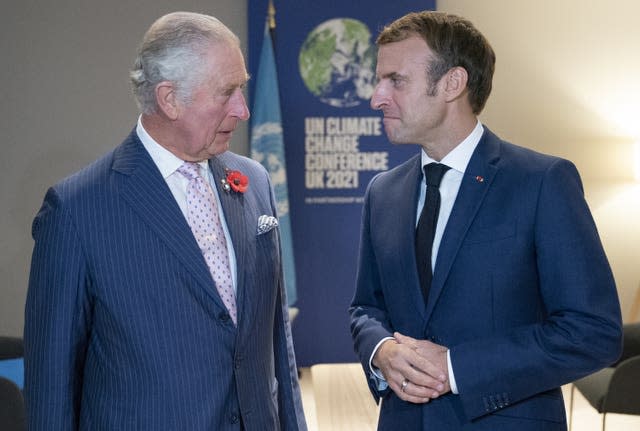How does a British coronation differ from Europe’s other monarchies?
The United Kingdom is the last country in Europe to hold a coronation ceremony for its monarchy.
However, other European countries still have monarchies, and practice their own unique ceremonies.
There are 12 sovereign monarchies left on the continent, with 10 of them hereditary, and two, Vatican City and Andorra, elective.
Here is a list of how their royals accede to the throne:
– Luxembourg
Luxembourg is a Grand Duchy, with a hereditary Grand Duke serving as head of state.

He is inaugurated during a ceremony at Luxembourg’s parliament, the Chamber of Deputies, where he vows to obey the country’s constitution.
– Denmark
Denmark is a constitutional monarchy, with a hereditary head of state.
The current monarch, Queen Margrethe II, did not have any formal enthronement ceremony.

Instead, news of her accession was announced from the balcony of Christiansborg Palace in Copenhagen.
– Norway
Norway is a constitutional monarchy, with a hereditary monarch as its head of state.

The current monarch, King Harald V, was consecrated as king during a ceremony at Nidaros Cathedral in the city of Trondheim in 1991.
– Liechtenstein
Liechtenstein, a microstate landlocked between Austria and Switzerland, is a semi-constitutional monarchy, with a hereditary prince as its head of state.
The state does not have a coronation.

Instead, the most recent prince, Prince Hans Adam, attended a mass by the Catholic Archbishop of Vaduz in Liechtenstein.
– Sweden
Sweden is a constitutional monarchy with a hereditary monarch as its head of state.
Instead of a coronation, Sweden’s monarch takes an oath of regal assurance during a meeting of the Swedish cabinet.

Afterwards, a formal ceremony is held at the Hall of State at the Royal Palace in Stockholm.
– Vatican City
Vatican City is the home of the Holy See, the Government of the Catholic Church.
The Pope is the elected head of the church.

He is chosen by the church’s cardinals.
After the pope is elected, he is inaugurated during a mass in St Peter’s Square in the Vatican.
– Spain
Spain is a constitutional monarchy with a hereditary monarch as its head of state.

The current king, King Juan Carlos, ascended to the throne in a low-key ceremony at the Spanish parliament following the abdication of his father in 2014.
– Andorra
Andorra, a microstate landlocked between France and Spain, is a semi-elective diarchy. This means that it has two heads of state – one appointed and one elected.
The elected head of state is the President of France, while the appointed head of state is the Catholic Bishop of Urgell.

When Emmanuel Macron was sworn in as President of France, he also became the co-prince of Andorra.
Similarly, when Joan-Enric Vives i Sicilia was appointed Bishop of Urgell by the Pope he was made a co-prince too.
– The Netherlands
The Netherlands is a constitutional monarchy with a hereditary monarch as its head of state.

The king or queen is inaugurated during a joint-assembly of the country’s parliament, held at the Nieuwe Kerk church in Amsterdam.
– Belgium
Belgium is a constitutional monarchy with a hereditary monarch as its head of state.
The current king, King Phillipe, was sworn in as monarch during a formal service in Brussels.

A parade was held through the streets of the capital, with King Philippe appearing with his family at the balcony of the Royal Palace.
– Monaco
Monaco, a microstate on the French Riviera, is a principality, with a hereditary prince as its head of state.

The Prince of Monaco is enthroned in an investiture ceremony at Saint Nicholas Cathedral.
The prince is presented with two keys of the city as part of his investiture.

 Yahoo News
Yahoo News 
